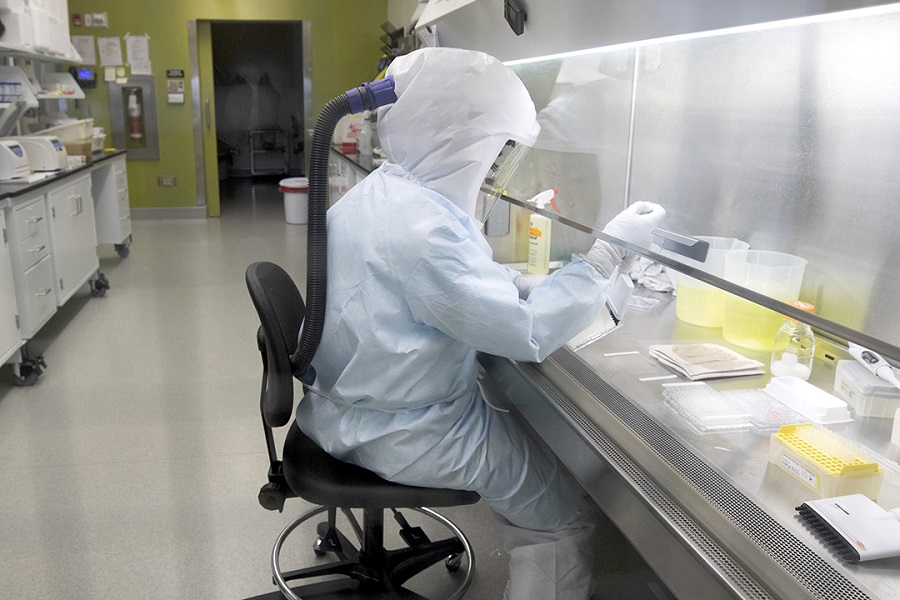RIO DE JANEIRO, BRAZIL – The new variant is capable of invading cells without the ACE2 receptors that are currently the virus’ gateway; the finding is surprising and may change the course of the pandemic, but vaccines and antibodies remain effective.
The virus’ new ability was accidentally discovered by scientists at the University of Washington, who were testing the effect of Sars-CoV-2 on 10 cell types from the lungs, tongue, pharynx, and esophagus.
The virus failed to infect them, with one exception: the H522 lung cells. This surprised researchers, as these cells have no ACE2 receptors (from the “angiotensin-converting enzyme 2”), which are currently the gateway for the coronavirus in human cells – the spicules of the virus attach to them.

The scientists decided to take a closer look at this virus sample. It had been collected from a Covid-19 patient in Washington, and grown in the university laboratory for testing. Researchers found that during cultivation, Sars-CoV-2 had acquired two mutations. The two are located in the spike protein, which forms the spicules of the virus.
They are called R682W (exchange of amino acid arginine for tryptophan at position 682 of the spike protein gene sequence) and E484D (exchange of glutamic for aspartic acid at position 484).
The second mutation is the most important – it is this that allows the virus to infect cells that do not have ACE2 receptors. This is amazing, not least for the following reason: scientists at the University of Washington have not been able to determine how the virus infected the cells. If it doesn’t use ACE2 receptors, how does it act? It is not yet known. A possibility is that the new strain of the virus exploits some other cellular “key” – which has not yet been identified, and has been provisionally named “X receptor.”
The ability to develop a new means of infection could alter the evolutionary path of Sars-CoV-2 – and change the future of the pandemic. “It’s scary to think about the world’s population fighting a virus that diversifies its cellular infection mechanisms,” said biologist M. Ben Major, one of the study’s authors.
“It is possible that the virus uses ACE2 until it runs out of cells with that receptor, and then it switches to the alternative pathway,” said biologist Sebla Kutluay, co-author of the study. Tests were conducted in vitro, not in vivo, so it is unknown whether the phenomenon also occurs in the body, and to what extent.
“This may have relevance in the body, but until we know what the [alternative] receptor is, we can’t say what the relevance will be,” Kutluay said.
The good news is that the mutant strain has been tested with antibodies collected from people who have had Covid-19 or have been vaccinated against the disease; in both cases, they have shown capable of neutralizing the altered Sars-CoV-2. There is yet another mitigating factor.
In nature, away from the laboratory, position 484 of the spike protein is usually taken by another mutation: E484K, which is present in the Beta (formerly B.1.351, discovered in South Africa), Gamma (the Brazilian P.1), and, to a lesser extent, also in the Alpha variant (the English B.1.1.7).
This mutation is highly favorable for the virus, as it gives it partial resistance to antibodies. For E484D to spread, it would need to offer something even better in evolutionary terms – which seems unlikely in the short and medium term (because cells with ACE2 receptors are abundant in the human body, and there are still no drugs capable of blocking the action of coronavirus on them).
Source: Super Interessante

